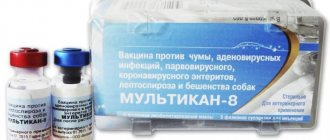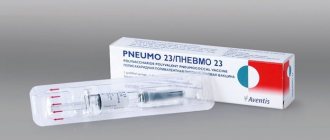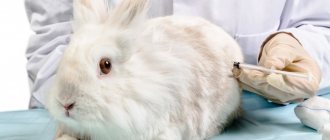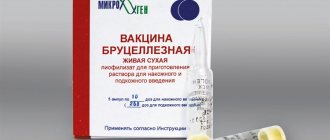Methods of infection with leptospirosis
Humans can only become infected with leptospirosis from animals. No sick person becomes a source of leptospirosis. Among animals, leptospirosis is transmitted through contaminated water and food or through fleas and ticks. These parasites can also transmit infection to humans. There are two main foci of leptospirosis infection - natural and agricultural. The natural focus includes wild rodents and insectivores living in humid forest and forest-steppe zones. The main animals of the natural focus of leptospirosis infection are:
- harvest mouse;
- shrew;
- vole;
- gray rat;
- wood mouse;
- hedgehog;
- marmot;
- fox;
- less often - amphibians.
Infection with leptospirosis in an agricultural outbreak occurs due to domestic animals and small rodents living on livestock farms. The main animals of the agricultural focus of leptospirosis infection are:
- cattle (cow);
- small livestock (sheep, goat);
- horse;
- pig;
- dog;
- "domestic" black rat;
- house mouse;
- less often - poultry (ducks, geese).
All animals act as carriers and carriers of leptospirosis infection. The parasite multiplies in the animal's body, remaining for a long time in the kidneys. For many months (up to two years), leptospira are excreted in the animal’s urine into the environment, where they infect soil, water resources and surrounding objects. The most dangerous are small bodies of water (ponds, swamps, small lakes and rivers), where a large concentration of Leptospira is created. In large bodies of water, the urine of infected animals is diluted with large amounts of water, reducing the concentration of Leptospira to a minimum.
Leptospirosis infection can enter the human body in several ways. The main methods of transmission of leptospirosis infection are:
- contact;
- nutritional;
- aspiration;
- transmissible.
Contact route of infection with leptospirosis
The contact route of infection with leptospirosis is the most common. The parasite enters the human body through damaged skin and mucous membranes of the body that come into contact with contaminated surfaces and liquids. Infection occurs during agricultural work in wet meadows and pastures, on farms and meat processing plants. Infection with leptospirosis also occurs when caring for sick animals. There is a possibility of infection by contact through infected meat and blood of sick animals. People who most often become infected with leptospirosis through contact are:
- water meadow workers;
- rice farm workers;
- pet breeders;
- shepherds;
- milkmaids;
- meat processing plant workers;
- people working in slaughterhouses;
- veterinarians;
- livestock specialists;
- people working in dog kennels;
- people burying dead animals;
- taxidermists (people who make stuffed animals);
- deratizers (people who destroy rodents).
Superficial microtraumas (abrasions, scratches, small wounds) and undressed wounds become ideal entry points for leptospirosis infection. Even short-term contact of damaged skin with a source of Leptospira leads to infection of the body.
Polyvalent vaccine against animal leptospirosis and method of its production and use
(53)M.
Cl. A 61 K. 39/02C 12th UOO with the addition of the application RY Gaeularsteentsy Kentet USSR (23) Priority Published 23. 01 e 83 Bulletin ME 3 nv annan nzobnetekny and discoveries (53) Ud K 616.986. . 7: 615. 5711 /372(088.8) Date of publication of the description 01/26/83 Yu.A., Malakhov, A.P. Samokhvalov, A.N. Shupliko, V.R,I. Alekhin, V.S. Panov, G, f. Denisenko, A. KoiVschVuI.G. Seregin, I.A. Loginov, V.V. Shorokhov, A Ig Laiir, N.I. Ivanova and G.L. Soboleva;3 sh,VAll-Union State Scientific-Control Yuishr:,.1 x;khvetprep aratov (54) POLYVALENT VACCINE VGNKI AGAINST LEPTOSPIROSIS OF ANIMALS AND METHOD 6 OF ITS OBTAINING AND USE 1 The invention relates to veterinary microbiology, in particular to methods obtaining vaccines used for the prevention of leptospirosis in animals. A polyvalent phenolic vaccine for the prevention of leptospirosis for farm animals and fur-bearing animals and a method for its production are known. The method involves growing lep.tospira of six serogroups on a serum or albumin medium in balloons, mixing the grown cultures in certain combinations with subsequent preservation with Phenol, packaging, testing of sterility, harmlessness, activity1,, Well-known proposal 1 1) not according to" allows you to obtain a sufficient concentration of specific antigens in the vaccine, which forces you to administer it to animals twice in large doses: cattle, up to 25 ml, pigs up to 17 ml,2 Vaccinated animals create short-term immunity in piglets and in lambs up to three months, in calves and adult pigs - up to six months.5 A vaccine and a method of its production are known, including. cultivation of six strains of Leptospira, VGNKI, VGNKI"2, VGNKI, VGNKI"4, VGYKI, VGYKI"6, precipitation of Leptospira with trichloroacetic acid. in an amount of 3.0″3.33, defoliation, decanting of the supernatant liquid, additional thickening of the sediment by centrifugation, neutralization of acids in the sediment with 10% aqueous ammonia solution. Distilled water is added to the neutralized centrifugate so that the bcl sediment is condensed 25-30 times compared to the original culture. Hydroxal is added to the resulting mass to a concentration of 33″353″. The vaccine causes the formation of immunity lasting up to six months in young animals) 3,828 and twelve months in adult animals with a single dose of 0 3″2.0 mp21. The well-known vaccine 2 has not found application due to the complex preparation technology and the difficulty of administering it to animals due to its high density. The purpose of the invention is to increase the immunogenicity of the vaccine. To achieve the goal, the vaccine contains antigens of the indicated serotypes in the following ratio, VGNKI"2. 1 O"40VGNKI" 3 10"40VGNKI"410-40VGNKI"6 10-40or antigens of the given serotypes in the following ratio, 3:VGNKI" 1 10"40VGNKI" 4 10"40VGNKI10-40VGNKI-b 1 O"40in the following ratio ii component" Commodity per 1 liter of vaccine: Leptospira antigens 100-120 mg Aluminum hydroxide 25.7 28.9 g Whey protein 3.5-7.0 g Preservative O, “0.2 g Water: Up to 1 liter To achieve this goal, treat with half trichloroacetic acid the volume of the Leptospira culture after precipitation of the protein and aging, the supernatant liquid is decanted in an amount of 50″70 from the acid-treated culture, and the remaining part after its neutralization is mixed with the separated second half of the culture. The vaccine is administered in the following doses: to cattle in age 1-12 months » 4)0″4) ml, and at the age of 12 months and older 8-10 ml, for pigs 6″10 ml, for piglets aged 1″3 months. they are vaccinated twice in a dose of 2.0-2.1 ml, the vaccine is administered to small cattle in a dose of 2-5 ml, to carnivores - 3 ml. PRI M E 1. To prepare the deposited polyvalent vaccine VGNKI against leptospirosis of animals, six strains of Leptospira "VGNKI"1) VGIKI"2, VGNKI"3, VGNKI"4, VGNKI"5, VGNKI"6, selected for the breadth of the immunogenic spectrum, ensuring the production of a drug that prevents the disease of agricultural and commercial animals from leptospirosis in any. point of the Soviet Union and in most regions of the world. They are grown on a whey nutrient medium, preserved with thiomersal at a concentration of 1:10,000, then trichloroacetic acid is added to half the volume of the culture to a 3-3) 13-end mixture, left for 2-3 hours for a precipitate to form, the supernatant is decanted in an amount of 55″603 from the total volume of the mixture, the remaining sediment is neutralized with ammonia and after neutralization, mixed with the second half of the original culture, then b) a 0-6.14 solution of aluminum hydroxide in an amount of 29″30 is added. The vaccine thus obtained is packaged and monitored for activity, harmlessness and sterility. EXAMPLE 2. Leptospira strains are taken, isolated from farm animals and selected on the basis of maximum immunogenic and antigenic activity and belonging to six serological groups: VGNKI, VGNKI 2, VGNKI 3, VGNKI 4 )VGNKI, VGNKI-b. To produce the vaccine, ataman is grown on a serum medium in reactors or cylinders, mixed in two options: 1st option: VGNKI, VGNKI, VGNKI"4 and VGNKI-b. 2nd option: VGNKI , VGNKI"4, VGNKI and VGNKI, A mixture of Leptospira cultures is preserved with merthiolate 1:10000. The canned culture is kept at room temperature for at least 10-12 hours. Half the volume of the canned culture prepared for the production of a series of vaccines is precipitated with trichloroacetic acid, adding 30 ml of a saturated solution of trichloroacetic acid to 1 liter of culture. The protein of the medium, under the influence of acid, turns into a gel state and precipitates together with the leptospires. 2 hours after the addition of the acid, the supernatant liquid is decanted in a volume of 603 of the total amount of the culture treated with acid. 8284 5 The precipitate is neutralized with a saturated ammonia solution with a pH of 7.0-7.2. In this case, dissolution of the precipitate is observed. The neutralized mass is introduced into the reactor with the remaining Leptospira culture and 30 aluminum hydroxide of 6 concentration is added, i.e. for 700 ml of culture - 300 ml of aluminum hydroxide. The mixture is vigorously mixed and the vaccine is packaged in a vial10 with a mechanical stirrer constantly running. The vaccine produced in this way is controlled for sterility and harmlessness using generally accepted methods Table 1 Composition of the vaccine Contents in 1 liter of vaccine minimum maximum eee Antigens Leptospira 1 OO mg 120 mg Concentrated Proposed EO adjuvant consisting of 2 g 3519 of: a) aluminum hydroxide hydroxides Vac yield per 100 l, 28.9 g culture 25.7 g 100 l 5 l 100 l Inoculate head 70 g Preservative 0.1 g 0.2 g 968.8 ml 970.6 ml Water a) One liter of the finished vaccine contains: 100 mg of antigens leptosyr serogroup segoEaeeoogg 1 ad 1 ae, Ca» p 1 with 1 a, Roeya, Tagazzoch (25 mg, for each serogroup) 29.2 g of adjuvant, 0.1 g of preservative - thiomersal salt (merthiolate) 970.6 ml. water.b) 1.l of the finished vaccine of the 2nd option contains in its composition: 120 mg of antigens of Leptospira serogroups Og 1 provourosa, Ropkea, Tagazoch 1, Hebdoaad 1 z (lo 30 mg for each serogroup) serum "exact white" blood volume 3.5 g 59 6pu) 35.9 g adjuvant, 0.2 g thiomersal, 963.8 ml water. The antigenic properties of the vaccine are controlled on five rabbits weighing 2.0-2.5 kg, which are administered the vaccine intraperitoneally once per dose 3.0 ml. 25-27 days after administration of the vaccine, blood is taken from rabbits and the titer in each serum sample is determined in RIA with leptospira of all serological groups included in the vaccine. The vaccine is considered active, if not less. than four out of five vaccinated rabbits will have a serum titer of no less than 1:400 for Leptospires: dppro-Cyrobosa, provona, parazoch 1, Lebopvd 13 and no less than 1:100 for Leothospira; 1 cegobaenggbad, sap 1 so 1 a. Comparative data on phenol, concentrated and deposited vaccines are presented in table. 2. Table 2 Comparative characteristics of the vaccine Indicators phenolic cattle 4000 2500 10000 The vaccine produced by the proposed method has significant advantages over the phenolic and concentrated vaccines used. The polyvalent VGNKN vaccine is administered in a single dose: to cattle up to 12 months. 4 ml., from 1 to 2 years » 8 ml, adult animals 10 ml, pigs » up to 3 months. » 2 ml, from 3 to 1 month. - 6 ml, boars and pigs - 10 ml, small cattle up to 6 months. — 2 ml, from 6 to 12 months. - 2-5 ml, for rams and ewes "5 mp. 828459 8 or antigens of the indicated serotypes in the following ratio, 3 of them: VGNKI 10-40 VGNKI 10-40 VGNKI 10″4 VGNKI-b 1 o with the ratio of components per 1 liter of vaccine: Antigensleptospira 100″ 120 mg Aluminum hydroxide 2.56-28.9 g Whey protein 3.5 "7.0 g Preservative 0.1-0.2 g Water Up to 1 l2, Method of obtaining a polyvalent vaccine against animal leptospiroea according to and, 1, including growing cultures of leptospira strains in in a precise medium, preserving the leptospira, adding trichloroacetic acid to 3.0-3.5 concentrations to precipitate the protein of the medium and the leptospira, keeping the resulting mixture for precipitation, neutralization with alkali and adding a depositing substance, etc. The main reason is that half the volume of the Leptospira culture is treated with trichloroacetic acid, after precipitation of the protein and soaking, the supernatant is decanted in an amount of 50″70 of the culture treated with acid, and the remaining part after its neutralization is mixed with the separated second half of the culture; 3 Method of using the vaccine according to i. 1, characterized by the fact that the vaccine is administered in the following doses: to cattle aged 1-12 months. » 4.0-4.1 ml, and at the age of 12 months. and older » 8″10 ml, pigs 6″1 O ml, piglets aged 1″3 months. twice 2.0-2.1 ml, small cattle - 2-5 ml, carnivores - 1″3 ml, Sources of information taken into account during the examination 1 Instructions for the production and control of a vaccine against leptospirosis of agricultural and commercial animals, GVU USSR Ministry of Agriculture , 1968.2 Copyright certificate .SSSRif 555664, class. S 12 K UOO, 1976. The strains used in the vaccine are vaccine and, in terms of the breadth of the immunogenic spectrum, ensure the production of a drug that prevents the disease of agricultural and commercial animals from lentospirosis anywhere in the Soviet Union and in most regions of the world. The vaccine manufacturing technology according to the proposed method eliminates the need to concentrate the culture using centrifugation, which is an important factor, considering that about 400,000 liters of anti-leptospirosis vaccine are produced annually in the country; reduces the need for trichloroacetic acid. The administration of vaccines to animals does not cause any difficulties. Concentrated vaccine can be administered only with needles with wide channels, which causes unnecessary trauma to animal tissues, but even in these cases, injection needles often become clogged, which complicates mass vaccination of animals. 25 The proposed method makes it possible to produce from an equal volume of culture 2.5 and 4 times more doe of the polyvalent VGNKI vaccine against leptospirosis in animals than phenol and conc.30. The method allows to reduce the costs of biofactory production, and the use of the vaccine will save labor costs by 35-40 million injections annually, which will amount to savings of more than 2.8 million rubles, will eliminate the death of animals from leptospirosis, abortions and leptospirosis. Invention formula - 401. Polyvalent vaccine VGNKI against leptospirosis in animals, containing antigens from leptospirserotin strains VGNKI"1, VGNKI"2, VGNKI"3, VGNKI, VGNKI"5, VGNKI"6, preserved" 45 vant "aluminum hydroxide, whey protein and water, The main thing is that, in order to increase immunogenicity, the vaccine contains antigens of the given serotypes in the following ratio, F:VGNKI"2 1 O"40VGNKI10-40VGNKI"4 10-40VGNKI10- 40 55 VNIIPI Order 10790/7 Circulation 711 Subscription View
Prevention of leptospirosis
Leptospirosis infection can be prevented by limiting contact with carriers of the disease, which are infected rodent pests, farm and domestic animals. Preventive measures to combat this disease can be divided into two groups. The first category includes rules for which the person himself is responsible. The second group includes activities, the organization and control of which is the responsibility of sanitary and epidemiological control authorities and health care institutions. The rules for personal prevention of leptospirosis are:
- timely vaccination of animals;
- detection and treatment of disease in domestic animals;
- extermination of rodents and prevention of their appearance;
- implementation of preventive rules during agricultural work;
- compliance with safety rules when relaxing in nature;
- compliance with sanitary and hygienic requirements at the workplace in case of professional belonging to a risk group;
- immunization against leptospirosis.
Vaccination of animals against leptospirosis
Immunization of animals against leptospirosis is an effective measure that will protect humans and animals from this disease. Vaccination methods depend on the conditions in which the animal was acquired. If the owner knows for sure that the animal is not infected with leptospira (when purchased from a nursery or from a breeder), a standard vaccination procedure is carried out. If the animal was purchased by hand or picked up on the street, passive immunization is carried out, in which a special hyperimmune serum is placed before the vaccine.
Detection and treatment of leptospirosis in pets
Pet owners are at risk for leptospirosis, as the source of infection is often a sick animal. The main routes of infection are skin contact with water that is contaminated with secretions, saliva or urine of a sick animal. Timely identification of the symptoms of the disease in an animal and adequate treatment will allow a person to avoid infection with Leptospira.
Symptoms of leptospirosis
Leptospirosis is characterized by an acute onset: fever with chills, insomnia, headaches and thirst. The patient then exhibits the following symptoms:
- I am bothered by muscle pain, especially in the calves, thighs and lower back, and it is difficult to move normally.
- the face and neck turn red, swelling appears, “hood symptom”,
- The whites of the eyes turn red, and there is a feeling of sand in the eyes.
The duration of fever is 5 days or more. It is characteristic that 1-2 repeated peaks of fever may occur. If the disease reaches a severe stage, then jaundice occurs with yellowing of the sclera and skin, a rash on the skin, it can develop into hemorrhagic elements. Damage to the heart with low blood pressure and bradycardia, nasopharyngitis, pneumonia are also possible; the nervous system and kidneys are affected.
What kind of disease is this
Leptospirosis is an acute infectious disease of livestock and other domestic animals. The disease leads to pathologies of the capillaries and general intoxication of the body, as a result of which the functioning of the kidneys, liver and muscles of the body is disrupted.
The disease occurs on all continents and geographical areas, with the exception of Antarctica, and often seriously disrupts the epidemiological situation in the distribution area.
The disease is highly contagious, so even the slightest contact with the source of the disease leads to infection. Leptospirosis in veterinary medicine is considered one of the most dangerous pathologies. In more than 50% of cases, the infection is extremely severe and requires immediate medical intervention.
Other preventive measures
Vaccination is not the only way to help avoid the development of dangerous infections among livestock. Compliance with general sanitary and hygienic measures during mass breeding of commercial animal species will also help in this matter.
To do this, every farmer must:
- periodically inspect the wards on the farm;
- quarantine new animals for at least 30 days;
- adhere to general rules of hygiene for keeping livestock;
- use only clean and tested food and bedding;
- protect the farm from rodent infestation;
- treat livestock areas with antibacterial drugs at least once a month;
- Avoid grazing cattle in wetlands and nearby areas.
Leptospirosis is a dangerous infectious disease that occurs in almost all regions of mass cattle breeding.
The disease is quite contagious, therefore, in order to avoid infection of the entire livestock, it is imperative to adhere to the general rules of hygiene for keeping farm animals, including the livestock vaccination schedule. Otherwise, a dangerous infection can cause the death of animals, which will certainly lead to significant losses for the farm.
Symptoms
It is quite difficult to identify the first symptoms of the disease. Most adult animals do not experience clear changes in behavior. However, many veterinarians note that the first suspicions of the development of leptospirosis in a herd can be identified during the breeding season of livestock, since the infection almost completely prevents cows from becoming pregnant.
Among young animals, signs of the disease are even more difficult to detect. The infection leads to severe damage to the body and rapid death, which, in principle, makes it impossible to diagnose the disease in the early stages.
But the first suspicions that a herd is affected by leptospirosis can be raised when the following is observed in animals:
- hyperthermia (increased body temperature);
- rapid pulse;
- labored breathing;
- decreased appetite;
- lethargy and general depression;
- refusal of grazing;
- swelling of various areas of the body;
- bruises on the body and mucous membranes;
- bloody inclusions in the urine;
- symptoms of anemia;
- weight loss, up to unnatural thinness.









